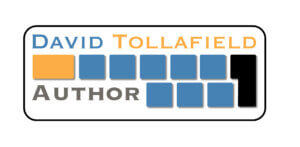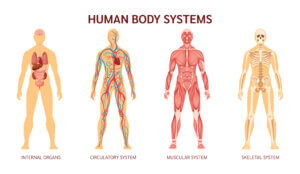What Do You Know About Your Clinical Visit? Part Three.
Author and former consultant podiatric surgeon David Tollafield will explore the essentials of the clinical examination and its implications for patients. If you have not read the short introduction, you are recommended to do so before advancing to parts one, two or three. Click here for the INTRODUCTION
Welcome to the third and last article about your clinical visit. A physician (clinical health worker, usually a medical doctor) has but a short time allocated to absorb a tremendous amount of information. Read the second part of the process here—the physician’s ear. For the sake of modernity in terminology, the clinician is used here rather than a medical doctor, as medical care is provided by a broader range of professionals today.
The Three Elements of Clinical Diagnosis
Observation, listening (taking details), and examination.
In the previous articles, the eye and ear have been used to build a picture of your clinical contact, known as the consultation. Naturally, we use all our senses, which include taste and smell. It is worth considering that a clinician has to understand the systems (shown in the image) as well as their workings before they can conclude a diagnosis. No one part of the body is independent of another. You, as the patient, have provided information, including the chief complaint. Now, the clinician has to check, verify, and qualify the condition and then discuss a management programme.
The first aim is to see if you are in good general health. Secondly, do you have a locatable problem such as an injury or localised inflammatory problem? The next stage is to see if one or more of the systems—internal organs, circulatory system, muscles and skeleton are working correctly. The differences between ages and gender are now recognised more than ever as being different. Often, we prefer to talk about normal expected ranges rather than say that someone is normal. This applies to blood pressure, heart rate, breathing, weight, and functional ranges of movement.
Pain is an indicator that lies outside normal expectations, especially when at rest or when no pain is expected. Walking, raising our arms, and bending should raise no pain concerns, but of course, as we age, limitations creep in. So we then need a careful examination of any joint to look for heat, swelling, limited movement and, last of all, power. Power from muscles is essential, and under most circumstances, you should be able to raise a limb both against gravity and resistance.
Healthy or Not?
Too thin or too fat, forget being PC for a moment. Both extremes are bad for health, so the body mass index is still used. Recent criticisms, of course, have been levelled, and body fat proportional measurement is used and can be found in gyms. Taller and smaller people may fall outside the usual BMI. You can use the calculator by putting in your height, weight, age and gender. Broadly, the range for a normal range lies between 18.5 and 25, with overweight creeping in above this. The clinician can already assess how you move and see how your clothes hang or fit. The face had given away signs of weight.
The eyes are examined for the inside lining, which highlights disease. Then, the backs of the eye (retina) can be examined with an ophthalmoscope for bleeds. However, this is not quite as routine and takes time, so the clinician will use a different line of questioning. Urine has, since time immemorial, been a good indicator of disease and kidney function. If there is high sugar in the urine, then the eye will be examined. A sample of wee is cheap to provide and test using a Clinistix. More information about urine testing can be found on this site.

The electrocardiogram or ECG
The doctor’s favourite toys are his stethoscope and blood pressure machine.
Blood Pressure & Heart Rate
Blood pressure (BP) is a measurement of health but varies between activity and rest, calmness and stress, and during the day. The heart rate rises with activity and is normal. A typical state arises if the rate of 50-80 beats settles back to this resting value after rising above 100 quickly. Athletes may not rise that high as the heart learns to work hard. Faints may be associated with lower blood pressure, but high blood pressure comes with furring of the lining of the blood vessels, making blood flow harder to reach the vital organs. The pressure has a resting value and a pumping value, so we see 70/125, for example, to show the pressure varies during each beat. Blood pressure is measured using digital reading cuffs as the old tall mercury methods have been replaced. The ease of access means you can keep an eye on your BP, but it is easy to become obsessed.
Since you are still conscious, he/she knows your heart is beating, but how well is it beating? If your heart is strained, it might enlarge, and your breathing will be affected because blood flow goes through the lungs and needs to pick up oxygen and drop waste gases. Your heart valves may be defective, and the sounds give this away. The beat has a rhythm, and this is well known; is it regular? Blood supply to the heart runs through the muscle (coronary arteries). If these are blocked or furred up, then exercise is going to cause muscle cramps such as angina. Chronic heart and lung disease, including cancer, can show in the fingernails. Lastly, the doctor may feel an ECG (EKG) is required—this shows the electrical conduction. A practice nurse often performs this test, and the QRST waveform is well recognised, but it is valuable to show recent heart attacks to specific areas of the heart at fault.
Lungs and Upper Respiratory Tract
The lungs have segments called lobes, and it is essential to check for congestion, wheezing and sounds to identify problems. Just as the heart affects the lungs, the lungs kick back to the heart. They are living twins in action. While breathing, the mouth is examined for changes, which remains a key indicator of health. The back of the throat and tonsils are checked for inflammation, and a torch-like instrument may look up the nose. The ears are vital for healthy eardrums, more so for defective hearing concerns. Dental checks include checking the gums for infection and bleeding, then the breath for stomach concerns or malnutrition.
Nervous System
The nervous system is easy and quick to check, as you can walk, talk, and move from standing to sitting. Joint movements are checked only when demanded of joint pain, as a rule of thumb. However, patchy sensations have to be tested for pressure, sharpness, dullness, and hot and cold responses for a complete check. The reflex hammer is a long, thin instrument with a circular rubber end for tapping tendons, elbows, knees, and ankles. It mainly shows profound changes in the nerve between the muscle and the spinal cord.
The Gut & Internal Examination
The stomach, intestine, and toilet habits will be discussed, and a physical internal will only be used to address specific concerns. For men, a rectal examination for prostate and haemorrhoids may be required, and of course, women will have specific gynaecological examinations during their life cycle. As men also have breast problems, this is not excluded if swellings arise. Sexually transmitted diseases often creep up from time to time, and the effect on health is notable and long-lasting, causing infertility and affecting the nervous system and heart.
The Skin
The skin is an important indicator of health, and because we are a multi-racial society, pigmentation presents conditions differently and needs to be understood. The density of melanin pigment represents darkness, but all skin can be damaged by the sun. Infections and allergies, as well as scaly skin conditions such as psoriasis, may be present and can be managed by the physician in some cases, while specialist dermatologists treat others.
Monitoring Disease
Changes in the workings of the body
There is a presumption we are healthy until proven otherwise. Once a condition is identified, it needs to be clarified, and a differential diagnosis considered to ensure something has not mimicked that condition. Every clinician aims to cure a disease, but in many cases, conditions are progressive and need to be kept in check. Obesity can be altered but requires patient compliance, as in most conditions. Can careful eating and exercise manage the condition—indeed, most diseases will improve if we are not overweight and our blood pressure is maintained. Prevention is the physician’s aim, supported by education, but this takes time and motivation on behalf of the patient.
Leaving the surgery with a prescription is not always the best medicine if we, as the patient, can take responsibility for our welfare; reducing alcohol and processed foods and stopping smoking (and vaping) offer both longer life and preserve our bones and joints.
The body, its organs and its muscular-skeletal system are all linked. If we help one, we help all. The clinical examination relies on a patient providing accurate information, which can be performed quickly using the principles of observation, good questioning techniques, and appropriate examination. For the average physician, time is vital, and the amount of information deduced and analysed can only come with years of practice, good education and mentoring. The next time you see a clinician, you may find that you are better informed.
Why not read Calories You and Your Goal by Barney St Anton, also released this month on ConsultingFootPain?

The information in these articles is curated to provide an overview and written for the layperson. Clinical practitioners will find necessary gaps. The author wishes to state that these articles are not designed for self-diagnosis and that any medical condition should be brought to the attention of a qualified person.
Other articles on this site
- The Magic of the Pelvic Floor
- The Rising Concern of Opioid Misuse Among Professional Athletes
- The Receptionist
- A Dying Healthcare System
- Getting the best foot healthcare
- What should you ask from a fact sheet?
- The Vascular Podiatrist
David R. Tollafield was a senior lecturer, researcher, and clinician who taught surgical medicine and pathology, as well as a consultant podiatric surgeon for over thirty years. He is the author of academic books and patient guide information. His author site can be reached by clicking here. Consultingfootpain is published by Busypencilcase Communications (BPCC) Est. 2015
Consultingfootpain is published by Busypencilcase Communications (BPCC) Est. 2015

19th February 2025


Recent Comments